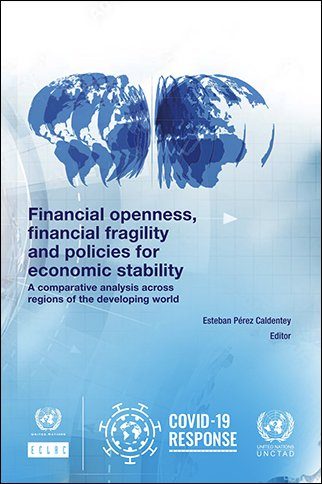Publisher: Third World Network Year: 2023 No. of pages: 42 Download now About the Book…
India from Latin America : Peripherisation, statebuilding and demand-led growth Author: Manuel Gonzalo (Book Review by R. Vishwanathan)

Published by Routledge India
ISBN 9780367542023
About the Book
This book studies the economic history of India and traces the Indian path of development from a Latin American framework and perspective. Despite sharing many historical and geological similarities, dialogue between the young democracies of Latin America and the Indian subcontinent is still extremely scarce.
The volume builds a common research agenda for the economic development of the Global South. It offers Latin American insights and highlights novelties and commonalities the region shares with India’s economic development. It pays special attention to the (geo)political, technological, financial, and institutional aspects related to the specific geographical and demographical features of the Indian subcontinent.
A step towards strengthening the dialogue on economic development in the Global South, this book will be of interest to scholars and researchers of heterodox economics, Indian economy, comparative economics, macroeconomics, political economy, economic history, development studies, Latin American studies, and South Asian studies.
Book Review by R. Viswanathan
Table of Contents
List of Figures
List of Tables
Foreword : Dr. JOSÉ E. CASSIOLATO
Foreword : Dr. K.J. JOSEPH
Foreword: Dr. LÍA RODRÍGUEZ DE LA VEGA
Foreword: Dr. EDUARDO CRESPO
Acknowledgements
Introduction
1 A Latin American approach
PART I : Peripherisation
2 The Indian Ocean ecosystem
3 The Indian subcontinent peripherisation
4 From regional centre to global periphery
PART II: Statebuilding
5 Emergence, consolidation, and challenges of the Indian State and its National System of Innovation
6 The Indian Statebuilding and a broad understanding of its National System of Innovation
PART III: Demand-led growth
7 The Indian Ocean since the 1990s: (Geo)political chessboard and demand-led growth
8 Structural growth drivers, external sector, and structural heterogeneity
9 Belindia’s growth acceleration
Final Remarks
References
Index
About the Author
Manuel Gonzalograduated with magna cum laude in economics from UBA (Universidad de Buenos Aires), Argentina. He has a master’s degree in economics and industrial development from UNGS (Universidad Nacional de General Sarmiento), Argentina and a doctoral degree in economics from UFRJ (Universidade Federal de Rio de Janeiro), Brazil. He is Adjunct Professor at the Degree on Development Economics of the UNQ (Universidad Nacional de Quilmes), Associate Professor at the school of economics of UNDEC (Universidad Nacional de Chilecito), and Co-Coordinator at the South Asia working group of CARI (Consejo Argentino para las Relaciones Internacionales). He has 20 years of experience in doing research, fieldwork, and giving classes and lectures at different universities of Argentina, Brazil, and India (UNQ, UNGS, UNDEC, UNSAM, UNTREF, UNCAUS, UTDT, FLACSO, UNDEF, ISEN, UFRJ, FIOCRUZ, JNU, etc.) mainly on comparative development, innovation and entrepreneurial systems, and industrial, STI and international cooperation policy. He was visiting researcher at the Center for Development Studies (CDS), Jawaharlal Nehru University (JNU), Kerala, India, and at the Research Network on Local Productive and Innovative Systems (Redesist), Economics Institute (IE), UFRJ, Rio de Janeiro, Brazil. He assesses Latin American governments, firms, think tanks, and international organisms in building their relationship with India, South Asia, and the Global South.



